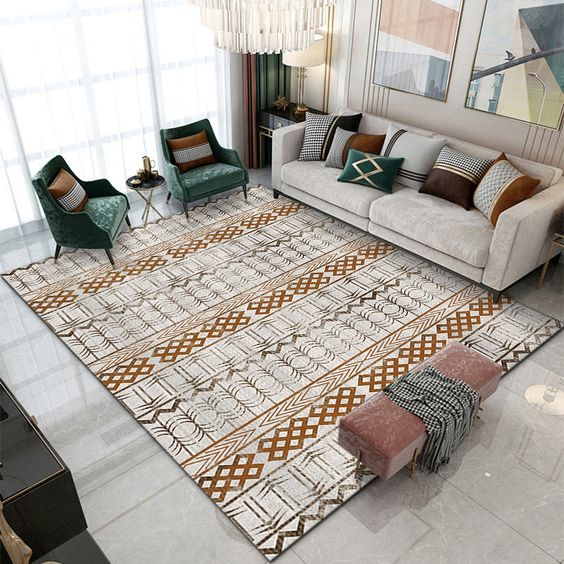Designing a living room and dining room combo can be a creative challenge, but it also opens up the opportunity to craft a versatile, multifunctional space. Whether you have a compact apartment or a spacious open floor plan, combining these two key areas can create a sense of flow and cohesion in your home. Let’s explore some practical design tips and ideas to make your living-dining room combo both functional and stylish.
1. Define Zones with Rugs
One of the easiest ways to create distinction between your living and dining areas is by using rugs. A large area rug under the living room furniture can help define that space, while a smaller or differently patterned rug under the dining table separates it visually. This technique adds warmth and texture while making each area feel like its own zone without the need for walls or partitions.

2. Choose Complementary Furniture Styles
Your living room and dining room should complement each other in terms of style and color palette. Opt for furniture pieces that harmonize without being too matchy-matchy. For instance, if your living room has a modern, minimalist sofa, try a dining table with clean lines to maintain a cohesive look. Balance the style with shared accents like wooden tones or metal finishes to create unity.
3. Open Shelving for Storage and Display
Open shelving can serve as a stylish divider while offering practical storage. Install floating shelves or a bookcase between your living and dining areas to showcase decor items, plants, or books. It can act as a subtle room separator while maintaining the open feel of the space. The shelving also provides a functional spot for storing dishes, glassware, or table linens.
4. Create Harmony with Lighting
Lighting plays a crucial role in creating a cohesive atmosphere in a shared space. To maintain balance, consider layering different lighting sources. A statement chandelier or pendant light over the dining table can act as a focal point, while soft, ambient lighting like floor lamps or wall sconces can keep the living area cozy. Ensure the lighting fixtures complement each other in style and finish to tie the whole look together.
5. Multi-functional Furniture
When working with a combo room, versatility is key. Consider investing in multi-functional furniture, such as an extendable dining table or a coffee table with storage. Sofas with built-in storage or modular seating can maximize the living area while keeping clutter at bay. Additionally, use stackable chairs or benches that can double as extra seating for guests when needed.
6. Use Color to Unify
A cohesive color palette can help visually blend the living and dining areas. Opt for neutral tones as a base, such as beige, gray, or white, and then add pops of color through accent pieces like throw pillows, artwork, or dining chairs. This will create a seamless flow while allowing you to add personality and interest to each space. You can also use a single accent color across both areas for a unified, polished look.
7. Opt for Space-Saving Solutions
In smaller homes, maximizing space is essential. Opt for space-saving solutions like a round dining table, which can fit snugly into a corner, or a sofa with a slim profile that won’t overwhelm the room. Wall-mounted dining tables that can fold down when not in use, or bar carts that can double as storage for kitchenware and living room accessories, are also great options.
By following these design tips, you can create a stylish and harmonious living room dining room combo that meets both your functional needs and aesthetic desires. Whether you’re working with a small or large space, the key is to keep things balanced, cohesive, and adaptable to how you live. With thoughtful planning and a creative approach, your combined living-dining space can be both practical and beautiful!
Read Here.
- 10 Chord Progressions That Every Aspiring Guitarist in the USA Should Master
- Violin Lessons for Kids: Fun and Easy Ways to Start Learning
- How can you play the C# chord quickly and easily on acoustic guitar?
- Breaking Down the G/B Chord: A Simple Approach for Pianists
- How to Improve Your Violin Playing with Simple Practice Routines